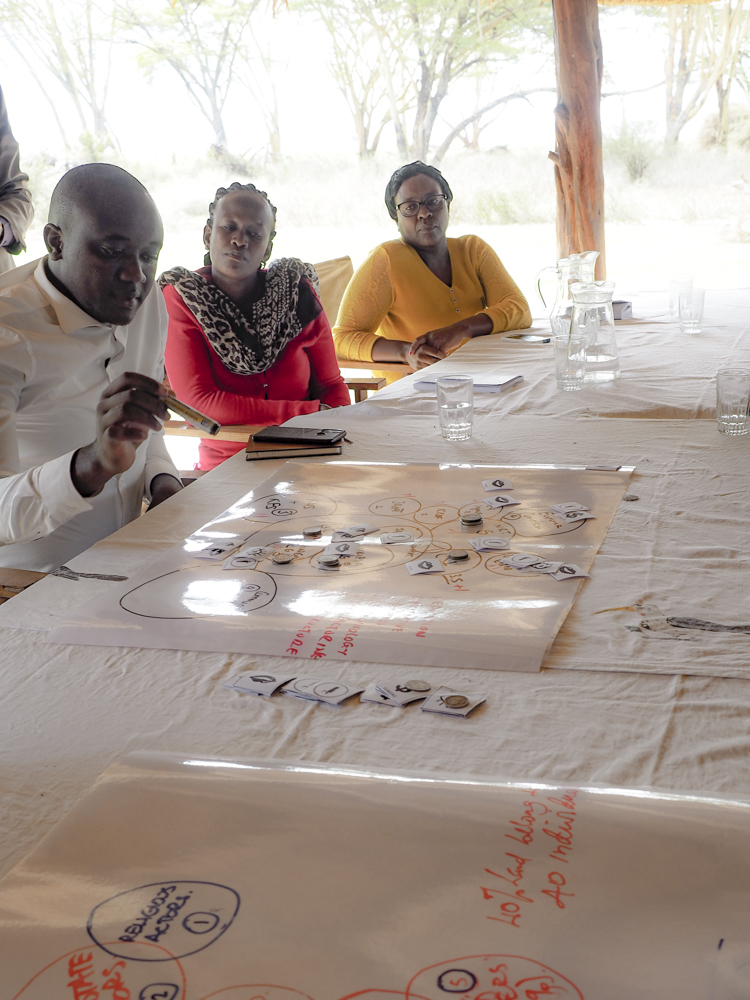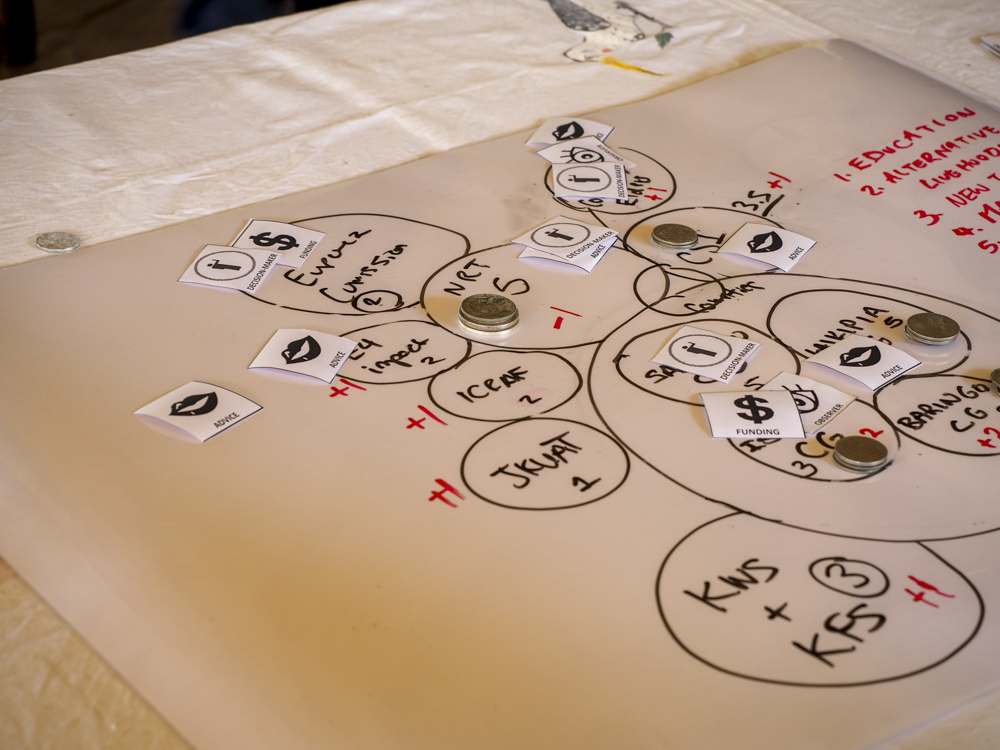
Net-Map by senior stakeholders of the RangER programme in Northern Kenya. 
Net-Map in process 
Getting – literally – to ground level: a Net-Map exercise with local community members reveals their perspectives of the balances of power within the RangER programme.
Landscapes are as much about their constituent biophysical parts as they are about their stakeholders. If our definition of ILM is recollected, it is a process by which the multiple claims upon a landscape can be managed and governed.
Net-Map is a highly participatory, and well established, methodology that helps us to identify those claims – who wants what from the landscape, in what ways and with what outcomes?
Net-Map helps us to understand levels and degrees of influence across a landscape – and how the influence of some actors might need to be increased, while that of others diminished, if sustainable outcomes are to be obtained.
Net-Map is an interview-based mapping tool that helps people understand, visualize, discuss, and improve situations in which many different actors influence outcomes.
By creating Influence Network Maps, individuals and groups can clarify their own view of a situation, foster discussion, and develop a strategic approach to their networking activities. More specifically, Net-Map helps players to determine
> what actors are involved in a given network,
> how they are linked,
> how influential they are, and
> what their goals are.
Determining linkages, levels of influence, and goals allows users to be more strategic about how they act in these complex situations. It helps users to answer questions such as: Do you need to strengthen the links to an influential potential supporter (high influence, same goals)? Do you have to be aware of an influential actor who doesn’t share your goals? Can increased networking help empower your dis-empowered beneficiaries?
The tool is low-tech and low-cost and can be used when working with rural community members with low formal education as well as with policy makers or international development actors.
Net-Map Toolbox by its developer, Eva Schiffer
This tool helps stakeholders to determine which actors are involved in a given network, how they are linked, how influential they are, and what their goals are. It is a hands-on social networking tool.
‘NetMapping’ by Wageningen University and Research
Watch the explanatory video from the Net-Map Toolbox:
Equipment needed
- Large sheets of paper for network map(one per interview, at least A3, better A2).
- Felt pens for drawing links(different colors according to different links).
- Adhesive paper as actor cards(“post-it” possibly different colors for different kinds of actors).
- Flat round stackable discs for building influence-towers (e.g. checker’s pieces, bicycle spare parts).
- Actor figurines (different board game figures, optional but especially useful when working with illiterate interviewees).
Download the manual
Net-Map step-by-step manual: short version (555 KB), detailed version in English (248 KB) and Portuguese (852 KB) training slide show (876 K).



